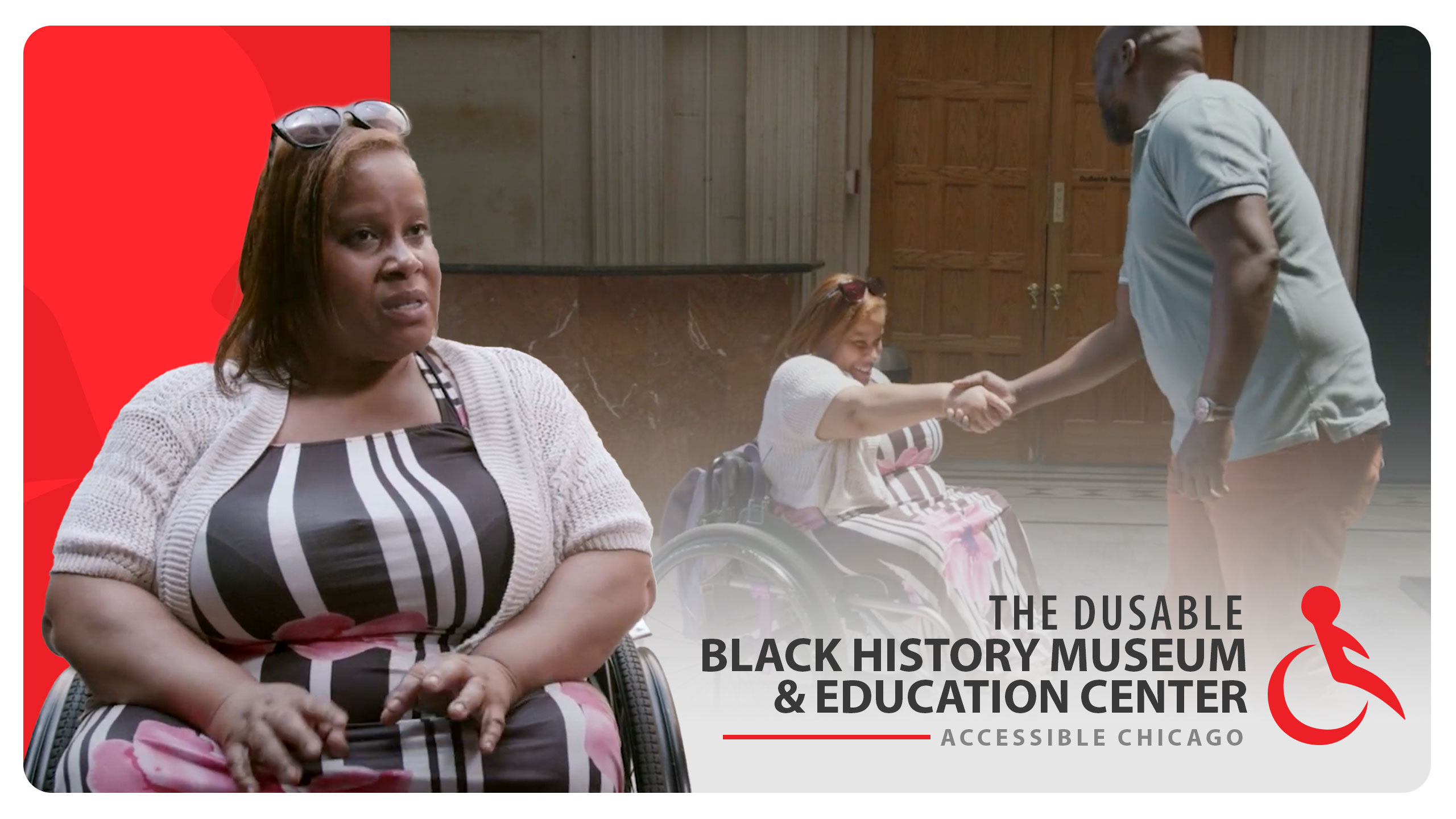
Step into the rich history of the DuSable Museum, nestled in the heart of Washington Park on Chicago’s south side. Discover the vibrant culture and heritage of the Black community through art, music, and storytelling. Perry, our guide, shares the museum’s commitment to accessibility, ensuring that everyone can access and enjoy the exhibits seamlessly. From beautiful landscaping outside to informative exhibits inside, every aspect of the museum is designed to be inclusive. Mia reflects on her experience, highlighting the informative and easygoing nature of the visit. Closed captioning, elevators, ramps, and accessible restrooms make the museum accessible to all, while continuous improvements ensure an ever-better experience for visitors with disabilities.
Click to View ASL Transcript
(ambient music)
PERRY: You are standing in the oldest AfricanAmerican History Museum in the country, the DuSableBlack History Museum and Education Center. We are on the south side of Chicago in Washington Park. I think this is a unique place to be when you wanna learn about history and culture of Black people. And we tell the history through art. We can tell it through music sometimes. We try to use all the different tools to talk about African American history and culture.
MIA: I love DuSable Museum for a lot of reasons. The landscaping is beautiful outside. The history on the inside gives you more of what the Black community actually offered for the city. Today’s experience, it was an easygoing experience. I had no issues at all. It was very accessible to get from one venue and one level of a venue to the next.
PERRY: Being here you realize that there’s just so much great history in the world. So I’ve learned, even it’s not a specialty I’ve learned just so much just from even other people.
MIA: I really enjoyed learning from Perry. The small time that we were able to interact, I believe that he was very informative and gave me such a monument of information about certain parts of the actual museum and things that this museum itself are trying to do to make it more accessible for individuals with disabilities. So he was very informative.
PERRY: There we go.
MIA: Wow.
PERRY: And so you can choose any kind of clips from some of these important things and you could go up and down, scroll up and down.
MIA: Oh my God, this is amazing.
(ambient music continues)
PERRY: I am really proud of the accessibility that we’re providing here. For people that are hearing impaired we have closed captioning on a lot of our monitors. For people that need wheelchairs we have accessibility through elevators and ramps. We have handicapped accessible restrooms on every floor. And then we also making changes too as we learn more about different things to continue. So I think that’s also a big plus is that we’re always looking for ways to make it better so that as many people as possible can enjoy this museum.
MIA: One of the things that I’m very passionate about I want to be able to have the experience of being able to tell people that there is no limit to what you can see in different parts of Chicago, especially our museums. Because this history is for everyone and everyone should be able to experience this no matter what level of disability that they have.
(ambient music continues)

Recent Comments